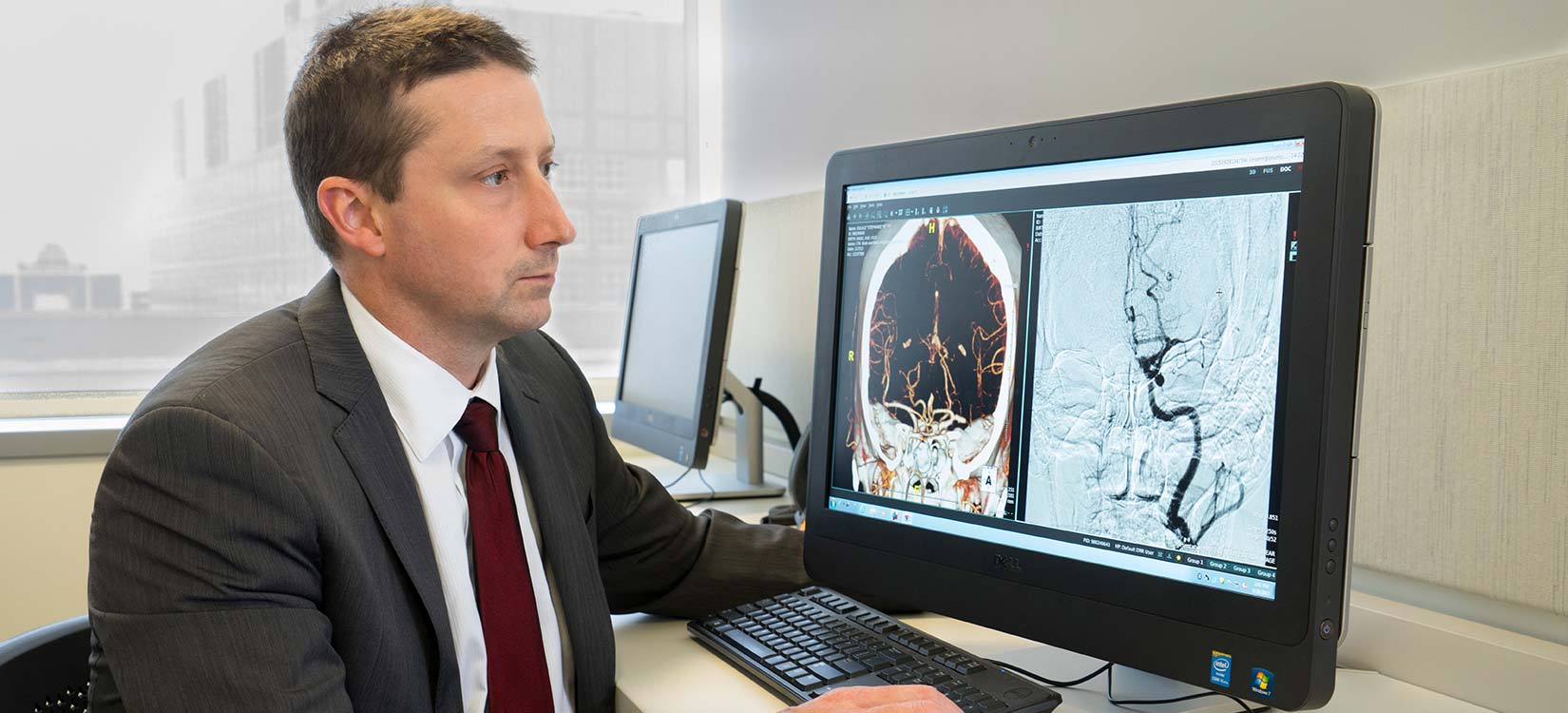Emergency stroke surgery reveals an aneurysm lying in wait

When it rains it pours – a common saying that all too accurately fits the experience of Stephanie Oulale.
Stephanie had surgery at Ohio State for stress-induced cardiomyopathy, a disruption in the heart's normal pumping function. Following the procedure, Stephanie says, "My family noticed that my lips were distorted and that I had a big bruise on my thigh. They let the nurses know right away."
Her doctors recognized these as signs of sudden interruption in blood flow to the brain: Stephanie had suffered a stroke.
Stephanie was rushed back into the operating room where Ciaran Powers, MD, used a stent-retriever to remove the stroke-causing clot. But it was then that Powers found another problem lying in wait.
"During the procedure we noticed another major medical concern – an unruptured aneurysm," explains Powers.
Left untreated, the abnormal ballooning of the blood vessel in Stephanie’s brain could have been fatal, as it is in nearly half of similar cases.
Following Stephanie's stroke recovery, she returned to Ohio State for an endoscopic procedure to insert into her aneurysm a pipeline embolization device, a tiny coil of woven metal that disrupts blood flow to the aneurysm, causing the blood inside to clot and, over several months, be harmlessly reabsorbed by the body.
The procedure was a success and Stephanie returned home the next day, where she resumed the speech, occupational and physical therapy of her stroke recovery.
"I'm grateful to Dr. Powers and the other physicians who oversaw my care at the Wexner Medical Center, as well as the therapists at Dodd [Rehabilitation Hospital]," says Stephanie. "They were all very concerned for me and took good care of me."

